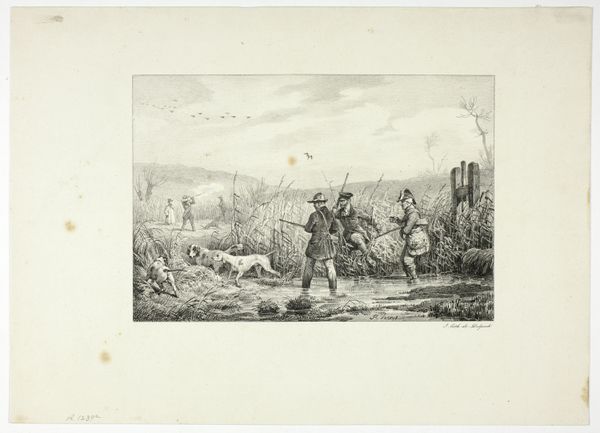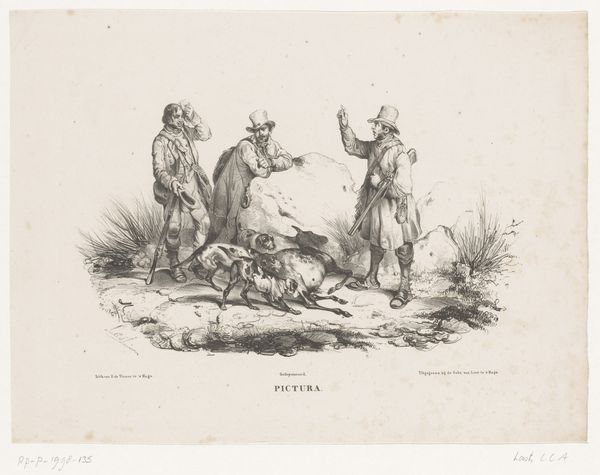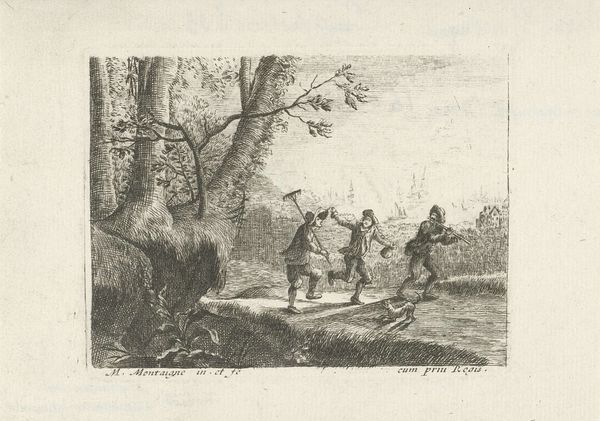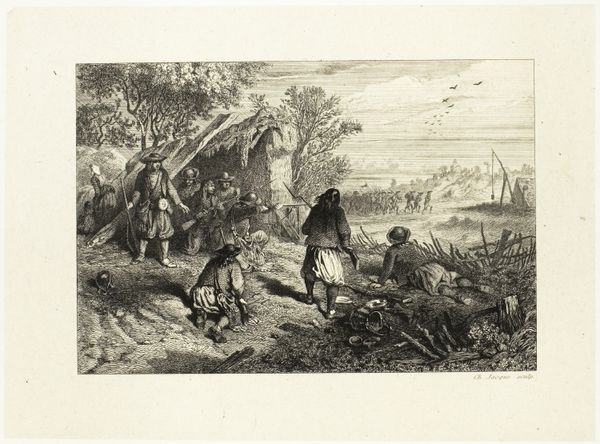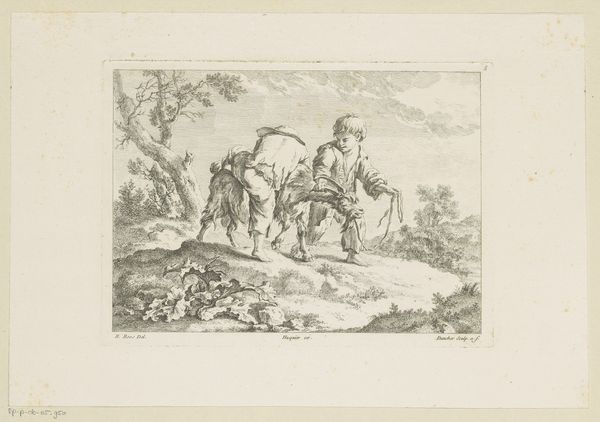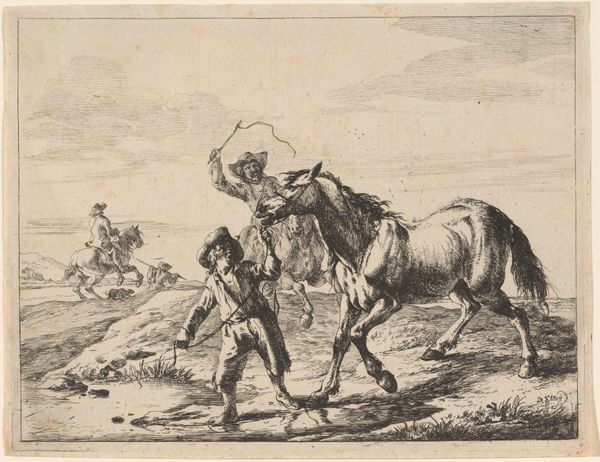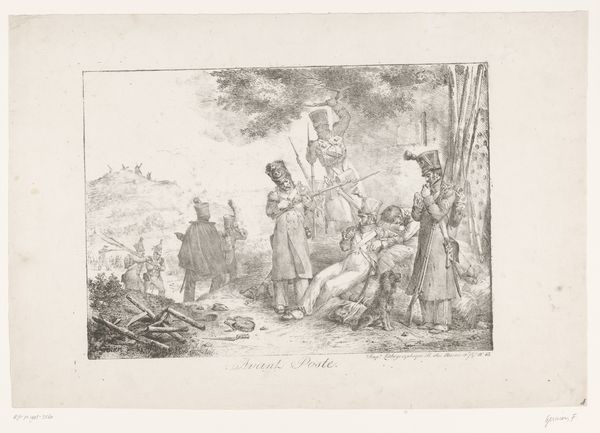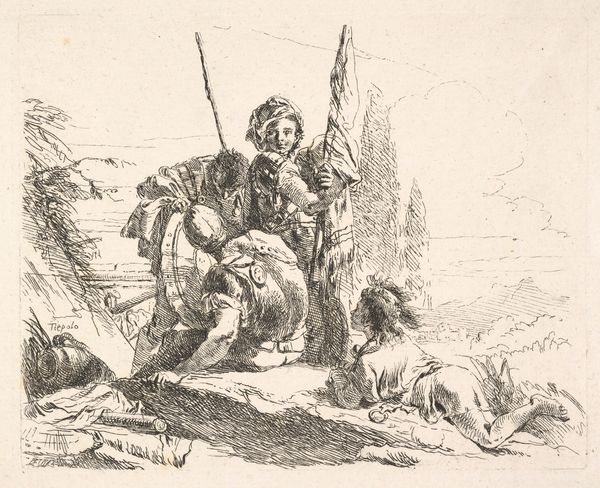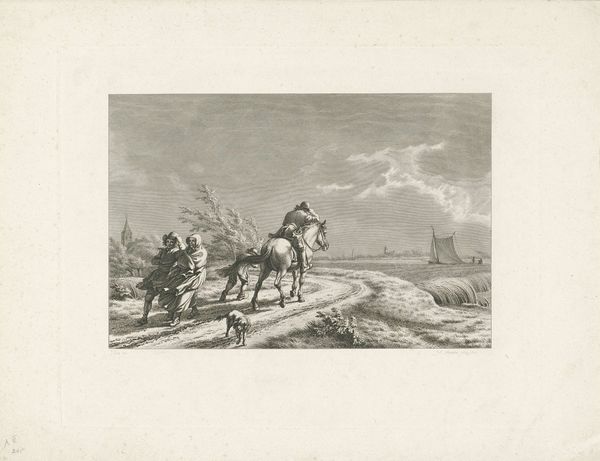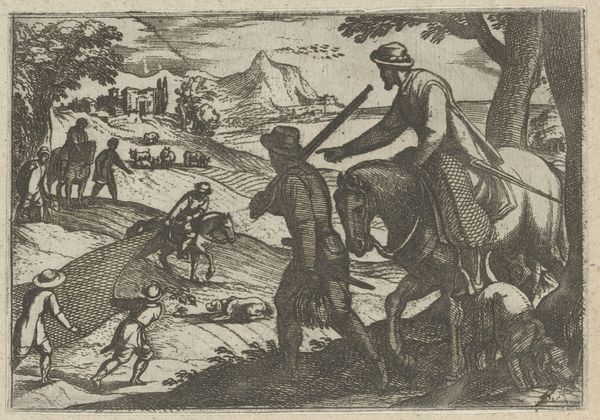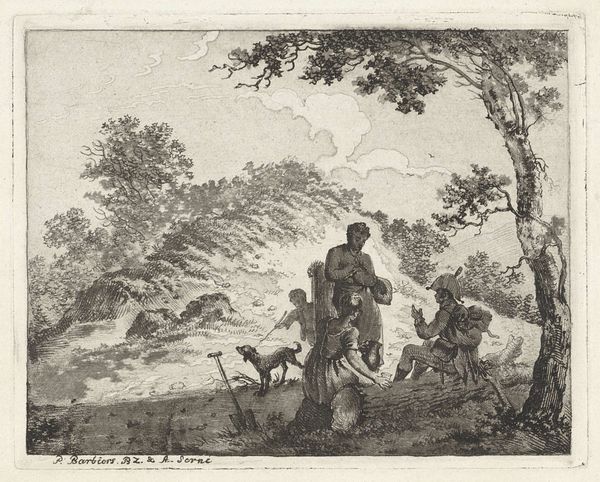
drawing, print, etching
#
drawing
#
baroque
# print
#
etching
#
old engraving style
#
landscape
#
genre-painting
Dimensions: height 123 mm, width 160 mm
Copyright: Rijks Museum: Open Domain
Curator: This etching, titled "Two Soldiers by the Shore of a River," was created by Romeyn de Hooghe between 1655 and 1667. It's a genre scene rendered in the Baroque style. Editor: Wow, the etching feels spontaneous. The line work gives it a nervous energy, a real sense of movement and purpose. Curator: The print depicts two soldiers hastily approaching a river. One gestures forward, directing a figure wading into the water near a small boat. Note the little dog yapping along the edge of what might be a humble settlement to the right. The overall narrative is not crystal clear, and I find myself probing this vagueness in terms of the then socio-political framework. Editor: Vagueness? I see frantic energy. This river crossing isn't exactly recreational, you know? Those soldiers, they seem so urgent, driven, like they’re maybe involved in something… clandestine. What if this scene exposes something of early modes of masculinity? Curator: I would want to know who they’re working for, who gets to have access to water. Whose labor makes crossing a river possible, either in peace or war. The bodies involved here are all gendered, armed, active or passive, positioned as settler or native in very interesting ways that seem absolutely ingrained with the militaristic and colonial logics. The dog too has a part to play! Editor: Yeah! That dog is clearly up to no good, totally complicit. Maybe that's why I was drawn in, subconsciously sniffing out a plot like a bloodhound myself! Anyway, to me the real artistry lies in de Hooghe's quicksilver handling of line; notice the atmospheric perspective he achieves, the way the buildings shrink toward the background. Curator: Agreed. Though the foreground and background blur together to me a little too much—perhaps due to the limitations of the etching technique, a common constraint of the time. However, if we contextualize this decision with postcolonial ecocriticism, it also hints at interconnectedness, and erasure, which could be intentional, in terms of representing colonial impact and geographical exploitation. Editor: Interesting, you bring a broader view, Curator! All these hidden struggles can add more context! Curator: I always feel like the work itself offers possibilities. It provides us opportunities to understand our relations and obligations in this life through this scene.
Comments
No comments
Be the first to comment and join the conversation on the ultimate creative platform.

